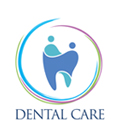
When you lose teeth, it not only changes the way you look, but it can keep you from eating your favorite foods and smiling with confidence. And while dentures and removable bridges may help, many people today are seeking a more stable, natural-looking way to replace missing teeth. Dental implants have become increasingly popular because they provide a strong, secure anchor for artificial replacement teeth. With dental implants, your new teeth will look, feel and function like natural teeth, allowing you to eat and smile with confidence.
What are Dental Implants?
A dental implant is a small titanium screw that is placed in the jawbone where teeth are missing. Dental implants provide secure anchors for the placement of an artificial tooth or set of artificial teeth.
Benefits:
- Most natural-looking and functional solution for missing teeth
- Enhanced quality of life
- Integrity of the facial structures is preserved
- The smile is restored as close as possible to its natural state
- Long term health of adjacent teeth is not compromised
- Replacement teeth that look, feel and function like natural teeth
- Increased stability
- Improved health due to improved nutrition and proper digestion
- Renewed self-confidence
- Improved appearance
- Improved ability to taste foods
- Increased convenience of hygiene and maintenance
Single-tooth implant:
A single-tooth implant requires a series of procedures and time for the implant to successfully anchor, or osseointegrate, into the jawbone. This can take several months before the crown can be attached.
But, once the implant process is complete, you’ll enjoy a new smile for decades to come.
You may be a candidate if you are in good overall health, have healthy gums and adequate bone to support an implant. You must be committed to thorough oral hygiene and scheduling regular dental checkups.
Implant-supported bridge:
An implant-supported bridge is similar to a regular dental bridge, but it is supported by implants and not by natural teeth. In most cases, when an implant-supported bridge is used, one implant is placed in the jawbone for each missing tooth. Then the crowns are connected to each other to form one piece.
An implant-supported bridge is used when more than one tooth is missing. It also may be used when your dentist is concerned that you might put too much pressure on individual implants that are not connected to each other.
>Implant-supported overdentures:
Implant-supported overdentures or implant dentures are a type of full overdenture that is supported by or attached to dental implants. A regular denture that rests on the gums that tends to fit less firmly. An implant-supported denture has special attachments that snap onto attachments on the implants providing better retention to the overdentures
Bone Regeneration:
Dental implants placed within the jawbone have become an increasingly popular and aesthetic way to replace missing teeth with strong, high quality artificial teeth that look, feel, and function like your own teeth. Unfortunately, in some cases, the jawbone may not be strong or substantial enough to support dental implants. There are many reasons this can happen. For example, when several teeth are missing, the jawbone may weaken and atrophy over time. Jawbone structure can also be negatively affected by other conditions, including trauma, infection, gum disease, surgery, and congenital defects. Without a healthy, stable jawbone, dental implants cannot be placed securely.
For patients with defects or deficiencies in the jawbone,. Bone grafting can increase bone volume, replace missing bone, and fill in voids in bone structure. In short, advanced bone grafting techniques allow us to grow bone exactly where we need it.
Bone Grafting:
Bone grafting is an advanced, effective and safe way to promote healing and bone growth in the jaw. Because bone tissue has the ability to regenerate and grow, strategic placement of bone grafts can encourage bone growth in the space where it’s needed. Once the graft has been placed, the bone must be allowed to heal before placing the dental implants, typically 4 to 9 months.
Wisdom teeth removal:
By the age of 18, most adults have 32 teeth; 16 teeth on the top and 16 teeth on the bottom. Each tooth in the mouth has a specific name and function. The teeth in the front of the mouth (incisors, canine, and bicuspid teeth) are ideal for grasping and biting food into smaller pieces. The back teeth (molar teeth) are used to grind food up into a consistency suitable for swallowing.
The average mouth is made to hold only 28 teeth. It can be painful when 32 teeth try to fit in a mouth that holds only 28 teeth. These four other teeth are your third molars, also known as “wisdom teeth.” These can become problematic.
Why Should I Have My Wisdom Teeth Removed?:
Wisdom teeth are the last teeth to erupt within the mouth. When they align properly and gum tissue is healthy, wisdom teeth do not have to be removed. Unfortunately, this does not generally happen. The extraction of wisdom teeth is necessary when they are prevented from properly erupting within the mouth. They may grow sideways, partially emerge from the gum, and even remain trapped beneath the gum and bone. Impacted teeth can take many positions in the bone as they attempt to find a pathway that will allow them to successfully erupt.
What kind of problems can wisdom teeth cause?:
As wisdom teeth struggle to find room to grow in a crowded mouth, these teeth may grow in sideways, partially emerge, or even remain trapped under the gums. When wisdom teeth are partially or completely trapped in the gum, they are called impacted. While wisdom teeth can cause obvious issues such as misaligned and crowded teeth, impacted wisdom teeth may cause many unseen and serious problems, such as jaw and nerve damage. Whether your wisdom teeth have come in or not, they may be causing problems that could include:
- Misalignment of jaw and teeth
- Tooth decay from trapped bacteria and food
- Infections
- Pain, stiffness, and swelling
- Gum disease
- Jawbone damage
- Nerve damage
- Cysts and tumors in the jaw
Early evaluation and removal of wisdom teeth is the best way to resolve and prevent problems associated with wisdom teeth.
